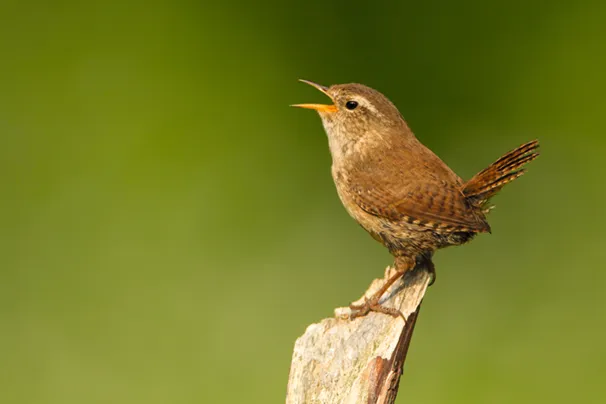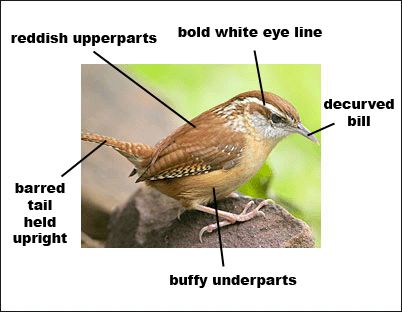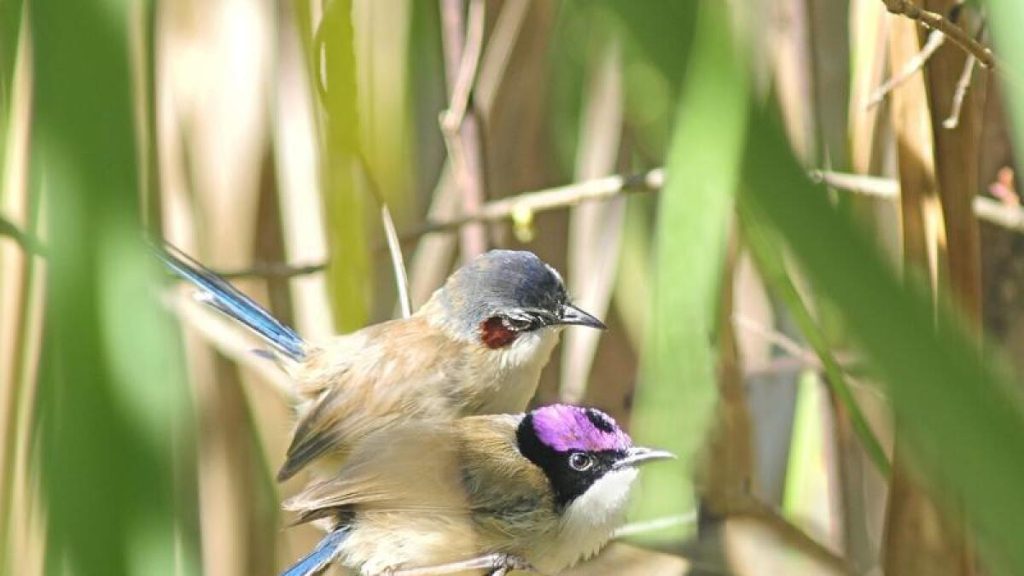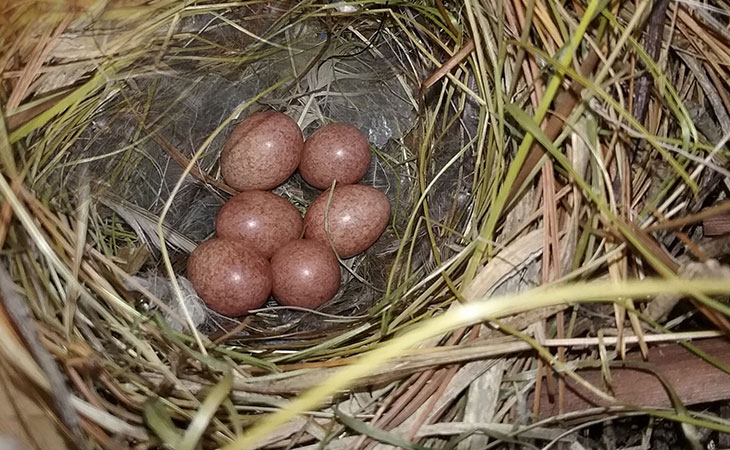The wren is a small but mighty bird known for its energetic behavior, loud voice, and intricate songs despite its diminutive size. Often overlooked due to its tiny stature, the wren carries immense symbolic and ecological significance. This bird, found across many parts of the world, adapts well to various ecosystems, showcasing resilience and intelligence. But what is the speciality of Wren bird that makes it so fascinating?
Wrens are not just ordinary birds. They possess unique characteristics such as distinctive tail posture, a complex song repertoire, and fierce territorial behavior. These birds play a vital role in maintaining the balance of ecosystems by controlling insect populations. Understanding what kind of bird is a wren involves delving into its diverse species, behaviors, and ecological impact.

This long-form article explores in detail what is special about a wren. From their spiritual symbolism to their physical characteristics, diet, habitat, and mating patterns, we uncover the many facets that make the wren truly special. Whether you’re a bird enthusiast or a curious reader, this comprehensive guide will answer your questions about the significance of a wren bird and much more.
Key Takeaways
- Wrens are known for their loud, melodious songs despite their small size.
- The wren bird has symbolic and spiritual significance in many cultures.
- They play a crucial role in the ecosystem by preying on insects.
- Wrens display aggressive territorial behavior, especially the males.
- With over 80 species, wrens show remarkable adaptability and diversity.
- They are important indicators of environmental health.
- Wren birds exhibit unique features such as erect tails, strong beaks, and varied feather colors.
- The biggest wren species can be surprisingly robust and adaptable.
- Wren diets are diverse and include insects, larvae, and occasionally small vertebrates.
- Understanding wrens helps in appreciating their role in preserving ecological balance.
Understanding the Wren: An Overview
What Kind of Bird Is a Wren?
Wrens belong to the family Troglodytidae, which includes around 88 species, primarily native to the Americas, though the Eurasian wren can be found across Europe and Asia. These birds are typically small, measuring between 3.5 to 5.5 inches in length, with a wingspan of about 5.9 inches. Wrens are often brown or grayish in color, featuring subtle streaks and a distinctive cocked tail that sets them apart. Known for their complex and loud songs, wrens use vocalizations for communication, territory defense, and attracting mates. Their habitats vary widely, ranging from forests and shrublands to gardens and urban settings, showcasing their adaptability.
| Feature | Description |
|---|---|
| Family | Troglodytidae |
| Size Range | 3.5 – 5.5 inches |
| Wingspan | Approx. 5.9 inches |
| Color | Brown, gray with streaks |
| Habitat | Forests, gardens, shrublands, urban areas |
| Song | Loud, complex, and varied |
| Distinctive Trait | Cocked tail posture |
| Geographic Range | Primarily Americas, also Europe and Asia |
Physical Characteristics of Wrens

Size, Weight, and Appearance
Wrens are small birds, with most species ranging from 3.5 to 5.5 inches in length. The size and weight of wrens are part of their distinctiveness, as they can appear tiny but possess loud voices. Typically, they weigh between 9-15 grams. Their plumage is predominantly brown or grayish, with some species sporting reddish or yellowish hues. The patterning on their feathers, which often includes dark streaks, allows them to blend into their natural surroundings, offering them a level of camouflage. One of the most recognizable physical features of a wren is its tail, which is usually cocked upwards at an angle, giving the bird a distinct and almost comical posture.
| Feature | Description |
|---|---|
| Average Size | 3.5 to 5.5 inches |
| Average Weight | 9-15 grams |
| Plumage Color | Brown, gray, reddish, or yellowish |
| Tail Characteristics | Cocked upwards at a sharp angle |
| Beak Type | Pointed and slightly curved |
| Wingspan | About 5.9 inches |
| Legs and Feet | Short but strong, suited for perching |
The Wren’s Song: A Powerful Vocalist
What is Special About a Wren’s Song?
Despite their small size, wrens are renowned for their incredibly loud and complex songs. Their songs are a significant part of their communication, serving various purposes, such as marking territory, attracting mates, and warning others of potential predators. The song of a wren is not just loud but is also highly varied, with each wren species having its own unique vocalizations. Male wrens are particularly vocal, and they may sing from elevated positions to ensure their songs carry far. These birds are able to produce a wide range of pitches and rhythms, which is unusual for birds of their size. Their songs can be so loud that they can be heard from a great distance despite the bird’s size.
| Feature | Description |
|---|---|
| Vocal Range | Wide pitch variation |
| Function | Territory defense, mate attraction |
| Song Duration | Can last several minutes |
| Male Singing Behavior | More frequent and complex than females |
| Significance of Song | Used for communication and mate attraction |
Wren Behavior: A Study in Agility and Aggression
Territorial and Social Behavior of Wrens
Wrens are known for their territorial nature, particularly males during the breeding season. A wren’s territory can be fiercely defended against both intruding males and even larger predators. Wrens often employ loud vocalizations to assert dominance over their territory, and their aggressive behavior includes chasing off other birds and even larger animals that may threaten their nests. While they are solitary when it comes to nesting, wrens often form loose social groups outside of the breeding season. Their quick and nimble movements, combined with their defensive instincts, make them effective hunters and protectors of their territory.
| Behavior Type | Description |
|---|---|
| Territorial Behavior | Males defend areas aggressively |
| Vocal Defense | Loud songs used to warn and defend |
| Aggression Level | High during breeding seasons |
| Social Behavior | Loose group formation outside breeding |
| Predation Strategy | Agile, quick movements to hunt |
The Wren’s Diet: A Curious Feeder

What Do Wrens Eat?
Wrens are primarily insectivores, feeding on a variety of insects such as beetles, ants, spiders, and caterpillars. They are excellent hunters, using their sharp beaks to pick through foliage, bark, and soil in search of food. While insects make up the bulk of their diet, some species of wren bird may also consume small vertebrates like lizards and frogs, as well as fruits and seeds. Their feeding habits contribute significantly to pest control in their ecosystems. Wrens are opportunistic feeders and can adapt their diet based on availability, making them a versatile species in terms of food sources.
| Food Type | Description |
|---|---|
| Primary Diet | Insects (beetles, ants, caterpillars) |
| Secondary Diet | Small vertebrates (lizards, frogs) |
| Occasional Food | Fruits, seeds |
| Feeding Strategy | Foraging in foliage, under bark, soil |
| Role in Ecosystem | Pest control through insect predation |
Habitat and Range: Adapting to Different Ecosystems
Where Do Wrens Live?
Wrens are found in a wide variety of habitats, from woodlands and forests to urban gardens and backyards. They are particularly adaptable birds, capable of thriving in both rural and city environments. While some species prefer dense, bushy areas or forests with plenty of underbrush, others have adapted well to human-altered environments such as suburban gardens and city parks. The Eurasian wren, for instance, can be found in temperate climates across Europe and parts of Asia, while the house wren prefers open woodlands and suburban areas. Speciality of Wren Bird tend to favor habitats where they can find adequate shelter and food, often building their nests in trees, shrubs, or even in human-made structures such as birdhouses or sheds.
| Habitat Type | Description |
|---|---|
| Forests | Dense, bushy areas preferred by some species |
| Urban Areas | Gardens, city parks, and suburban areas |
| Nests | Trees, shrubs, birdhouses, sheds |
| Geographic Range | Europe, Asia, Americas |
| Habitat Adaptability | Highly adaptable to human-altered environments |
The Mating Habits of Wrens

Courtship and Nesting Behavior
Wren mating rituals are fascinating and often involve elaborate displays. Males are particularly active during the breeding season, singing loudly to attract females. Once a female has chosen a mate, the male begins building a nest, often in secluded locations such as tree branches or man-made structures. Males may build several nests and present them to the female, who then selects the one she prefers. Once the female lays her eggs, she incubates them while the male assists by bringing food. The wren’s nesting behavior shows a level of dedication and cooperation that ensures the survival of their offspring.
| Mating Behavior | Description |
|---|---|
| Male’s Role | Builds nests, sings to attract mates |
| Female’s Role | Selects mate and preferred nest |
| Nesting Sites | Trees, shrubs, man-made structures |
| Courtship Displays | Loud singing, nest presentation |
| Egg Incubation | Female incubates eggs, male feeds her |
The Role of Wrens in Pest Control
Ecological Importance of Wrens
Wrens play a crucial role in their ecosystems by acting as natural pest controllers. By consuming large quantities of insects, wrens help regulate insect populations, preventing overpopulation of harmful pests. This helps maintain the balance of the local ecosystem by reducing the number of insects that could otherwise damage plants or crops. The wren’s ability to hunt insects in various environments, from gardens to forests, makes it an important bird for keeping ecological systems healthy. Wrens also feed on spiders, which further contributes to their role in pest control.
| Role in Ecosystem | Description |
|---|---|
| Pest Control | Regulates insect populations |
| Target Prey | Insects, spiders, small invertebrates |
| Impact on Plants | Helps prevent damage by pest insects |
| Contribution to Biodiversity | Supports healthy ecosystem balance |
Wren Species: Diversity Across the Globe
Variations and Adaptations
With over 80 species of wrens, there is a wide variety of adaptations that allow these birds to thrive in different environments. For instance, the Eurasian wren is small and brown, often found in dense forests, whereas the house wren, native to the Americas, is slightly larger and more adaptable to human-dominated landscapes. Each species has its own unique song and behavioral traits that are suited to its specific environment. Some wrens have evolved longer wingspans for better flight, while others have developed stronger beaks for insect hunting.
| Species | Characteristics |
|---|---|
| Eurasian Wren | Small, brown, forest-dwelling |
| House Wren | Slightly larger, adaptable to urban areas |
| Winter Wren | Strong beak, prefers dense forests |
| Marsh Wren | Long wingspan, aquatic habitats |
| Cactus Wren | Desert-dwelling, larger, vocal |
Wrens and Their Predators
Threats to Wren Survival
Like all small birds, wrens face numerous threats from predators. Larger birds of prey, such as hawks and kestrels, often hunt wrens. Additionally, mammals such as domestic cats and foxes may target them. While wrens are adept at evading predators through their quick and erratic flight patterns, their nests are often vulnerable to predation. Eggs and chicks can fall prey to snakes, raccoons, and other opportunistic animals. Despite these threats, wrens have developed various strategies to protect themselves, such as nesting in hard-to-reach places and using their loud calls to signal danger.
| Predator Type | Impact on Wrens |
|---|---|
| Birds of Prey | Hawks, kestrels may hunt adult wrens |
| Mammalian Predators | Cats, raccoons, and foxes target nests |
| Reptiles | Snakes may raid nests for eggs or chicks |
| Protection Strategy | Quick flight, nesting in hidden areas |
Wren Eggs and Reproduction

Reproductive Cycle of Wrens
The reproduction cycle of wrens begins with courtship during the spring, followed by nest-building. The female lays 3 to 8 eggs per clutch, with the eggs being incubated for about 12-16 days. The eggs are typically white or pale with speckles. Once hatched, the chicks are fed a diet primarily composed of insects and larvae. The parents are attentive, with the male often assisting in bringing food while the female incubates. The chicks fledge, or leave the nest, within 12-19 days of hatching.
| Stage | Description |
|---|---|
| Egg Laying | 3-8 eggs per clutch |
| Incubation Period | 12-16 days |
| Fledging Age | 12-19 days after hatching |
| Parental Care | Male assists with food for chicks |
Wrens and Their Role in Soil Health
How Wrens Affect the Soil Ecosystem
Wrens play an indirect but important role in maintaining healthy soil ecosystems. By feeding on insects and larvae found in the soil, they help regulate the population of pests that can harm plant roots. Their foraging behavior can also help aerate the soil, which improves its health. Additionally, when wrens scavenge carcasses or waste, they contribute to nutrient cycling in the ecosystem. This makes them valuable members of a healthy, functioning ecosystem, particularly in forest and garden environments.
| Role in Soil Health | Description |
|---|---|
| Insect Predation | Controls insect populations in soil |
| Soil Aeration | Foraging behavior loosens soil |
| Nutrient Cycling | Scavenging of carcasses helps recycle nutrients |
Wren’s Role in Seed Dispersal
How Wrens Contribute to Plant Growth
While wrens primarily feed on insects, they can also play a role in seed dispersal. Wrens may occasionally consume berries or seeds while foraging, and as they move from place to place, they unintentionally spread these seeds. This can help in the growth of new plants, particularly in environments where plants rely on animals for seed distribution. Their role in seed dispersal, while not as significant as that of larger birds or mammals, still contributes to plant biodiversity and ecosystem health. Wrens are especially important in forest ecosystems, where they help ensure the spread of various plant species.
Table (150 words)
| Dispersal Activity | Description |
|---|---|
| Seed Consumption | Wrens occasionally eat seeds and berries |
| Seed Dispersal | Seeds spread through movement |
| Ecosystem Impact | Contributes to plant growth and biodiversity |
| Habitat Preference | Primarily forests, but also urban gardens |
How Wrens Help Maintain Biodiversity
Wrens as Ecological Indicators
Wrens, like many birds, serve as ecological indicators, meaning that their presence, behavior, and health can reveal much about the state of an ecosystem. Because they are insectivores and rely on certain habitats for food and shelter, changes in wren populations can signal shifts in the local environment, such as changes in insect populations or habitat degradation. For instance, a decline in wren numbers can indicate a reduction in insect diversity or quality, which in turn affects the entire food web. By studying wrens, scientists can monitor the health of an ecosystem and take action to protect it.
| Indicator Role | Description |
|---|---|
| Insect Population | Decline in wrens signals insect issues |
| Habitat Health | Wren presence indicates healthy habitat |
| Food Web Impact | Declining wrens can affect entire ecosystem |
| Monitoring Tool | Wrens serve as indicators of environmental changes |
Wrens and Other Birds: Interactions and Competition
How Wrens Interact with Other Bird Species
Wrens, like many bird species, share their environments with a variety of other birds. While they are not overly social, wrens often interact with other bird species when foraging or during the breeding season. However, they can also be quite territorial, especially during the nesting season, and will fiercely defend their space from other birds, including larger songbirds and even other wrens. Their interactions with other birds are typically limited to competition for food and nesting sites. Wrens have also been observed taking advantage of human structures like birdhouses, sometimes leading to competition with other cavity-nesting birds such as chickadees or sparrows.
| Interaction Type | Description |
|---|---|
| Territorial Behavior | Wrens fiercely protect their nesting area |
| Competition for Food | Competes with other birds for insects |
| Nesting Competition | Wrens compete with chickadees and sparrows |
| Social Behavior | Minimal outside of mating season |
Wren Conservation: Preserving the Tiny Singer
Conservation Challenges Facing Wrens
Although wrens are not currently listed as endangered, some species are facing challenges due to habitat loss and environmental changes. Urbanization, deforestation, and agricultural expansion have led to the destruction of natural habitats, particularly for species that rely on dense forests or wetlands. Additionally, climate change poses a significant threat to wrens, as shifting temperatures and weather patterns affect their migration and breeding habits. Conservation efforts focus on preserving their habitats, planting native vegetation, and encouraging bird-friendly gardening practices to support wren populations. Protecting wrens is essential not only for their survival but also for maintaining the health of ecosystems that rely on their pest control abilities.
| Conservation Threat | Description |
|---|---|
| Habitat Loss | Urbanization and deforestation threaten habitats |
| Climate Change | Alters migration patterns and breeding |
| Invasive Species | Competing with non-native birds and pests |
| Conservation Efforts | Habitat preservation, bird-friendly gardening |
The Spiritual Meaning of Wren Bird
Symbolism and Cultural Significance
In many cultures, the wren is seen as a symbol of joy, resilience, and protection. In Celtic mythology, the wren was regarded as the king of all birds due to its fierce personality and strong voice. The wren’s ability to thrive in diverse environments has led to its association with adaptability and survival. In some Native American cultures, the wren is seen as a messenger, bringing messages of change and renewal. Its spiritual meaning is often connected to the idea of using one’s voice and actions to make an impact, regardless of size or power. The wren’s symbolism transcends cultural boundaries, making it a globally recognized emblem of strength, resourcefulness, and hope.
| Culture | Symbolism |
|---|---|
| Celtic | King of birds, resilience, joy |
| Native American | Messenger, renewal, change |
| Greek Mythology | Symbol of wisdom and cleverness |
| Modern Interpretations | Adaptability, strength, and hope |
Wrens and Their Role in Global Ecosystems
A Global View of the Wren’s Ecological Impact
Across the globe, wrens play an essential role in maintaining the balance of ecosystems. By controlling insect populations, they help protect both plant life and other animals that rely on healthy vegetation. Wrens also contribute to soil health, seed dispersal, and nutrient cycling. In forest ecosystems, they are an important part of the food chain, both as predators of small invertebrates and as prey for larger birds and mammals. Their presence in gardens and urban areas helps maintain biodiversity in human-dominated landscapes. As climate change and human activities continue to impact the natural world, the role of wrens in global ecosystems becomes even more important. They remind us of the delicate balance within nature and the need to protect even the smallest species for the health of the planet.
| Global Role | Description |
|---|---|
| Pest Control | Regulates insect populations worldwide |
| Seed Dispersal | Contributes to plant growth across ecosystems |
| Nutrient Recycling | Helps in decomposing organic matter |
| Habitat Importance | Critical to maintaining ecosystem balance |
| Global Impact | Key in maintaining biodiversity globally |
FAQs On Speciality of Wren Bird:
What are 10 facts about wrens? Loud singers, insectivores, diverse species, symbolic meanings, small size, aggressive defenders, urban dwellers, feathered tails, adaptable, and vital to ecosystems.
What is the speciality of Wren bird? Wrens are known for their loud, melodious songs, territorial behavior, and ecological importance in controlling insect populations.
What is special about a wren? Their ability to produce complex songs, their spiritual symbolism, and adaptability across ecosystems make them special.
What does a wren bird symbolize? In various cultures, wrens symbolize joy, protection, and resilience. They’re often associated with renewal and vitality.
What kind of bird is a wren? Wrens are small songbirds of the family Troglodytidae, known for their loud voices and upright tail feathers.
Where do wrens typically live? Wrens inhabit forests, gardens, shrublands, and urban areas, showcasing adaptability in different ecosystems.
What do wren eat? They primarily feed on insects, larvae, spiders, and occasionally small vertebrates or plant matter.
Why are wrens important to the ecosystem? Wrens help control insect populations, making them vital for pest regulation and ecological balance.
How many species of wrens are there? There are about 88 recognized species of wrens, varying in size, color, and habitat preferences.
What is the biggest wren species? The Giant Wren (Campylorhynchus chiapensis) is considered the largest, measuring up to 8.7 inches in length.
Visit: What Is The Speciality of to explore more fun facts about birds and animals.
